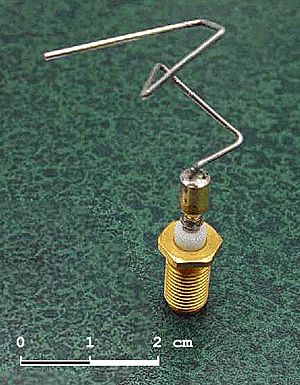Genetic algorithm facts for kids
A genetic algorithm is a clever computer program. It works a lot like natural selection, which is how living things change over time. These algorithms help computers find the best solutions to difficult problems, especially when there are many choices. They are part of a bigger group called evolutionary algorithms. Genetic algorithms copy natural processes like how traits are passed down (inheritance), small changes that happen (mutation), choosing the best options (natural selection), and mixing traits (crossover).
This idea is often used in computer science. It helps find smart, sometimes surprising, answers to problems that need to be optimized or searched. Genetic algorithms are good at finding overall best solutions, not just local ones.
Contents
How Genetic Algorithms Work
Imagine natural evolution as a game. In this game, an organism that plays well gets to pass its genetic material to its children. How well an individual does depends on its environment and how it interacts with others.
Genetic algorithms are like a computer game that copies this process. They create a group of possible answers to a problem. Each possible answer is like a "creature" or "individual" with its own "DNA."
Starting the Process
The game begins with a group of these "creatures," often made randomly. Each creature is a possible solution to the problem.
Finding the Best Solutions
In each "generation" (like a round of the game), the computer checks how good each creature's solution is. This is called its "fitness." Creatures with better fitness are more likely to be chosen.
Creating New Generations
Some creatures are picked from the current group based on their fitness. These chosen creatures then "reproduce" to make a new group. This reproduction involves:
- Recombination: Mixing parts of two "parent" solutions to create new "child" solutions. This is like how children get traits from both parents.
- Mutation: Making small, random changes to the new solutions. This is like random changes in DNA.
This new group of solutions then becomes the starting point for the next generation. The cycle keeps going with this new group.
When the Algorithm Stops
The algorithm stops when one of two things happens:
- A certain number of generations have passed.
- A really good solution has been found.
It's important to know that if the algorithm stops because it ran out of generations, it doesn't always mean the very best solution was found. But it usually finds a very good one!
Images for kids
See also
 In Spanish: Algoritmo genético para niños
In Spanish: Algoritmo genético para niños



